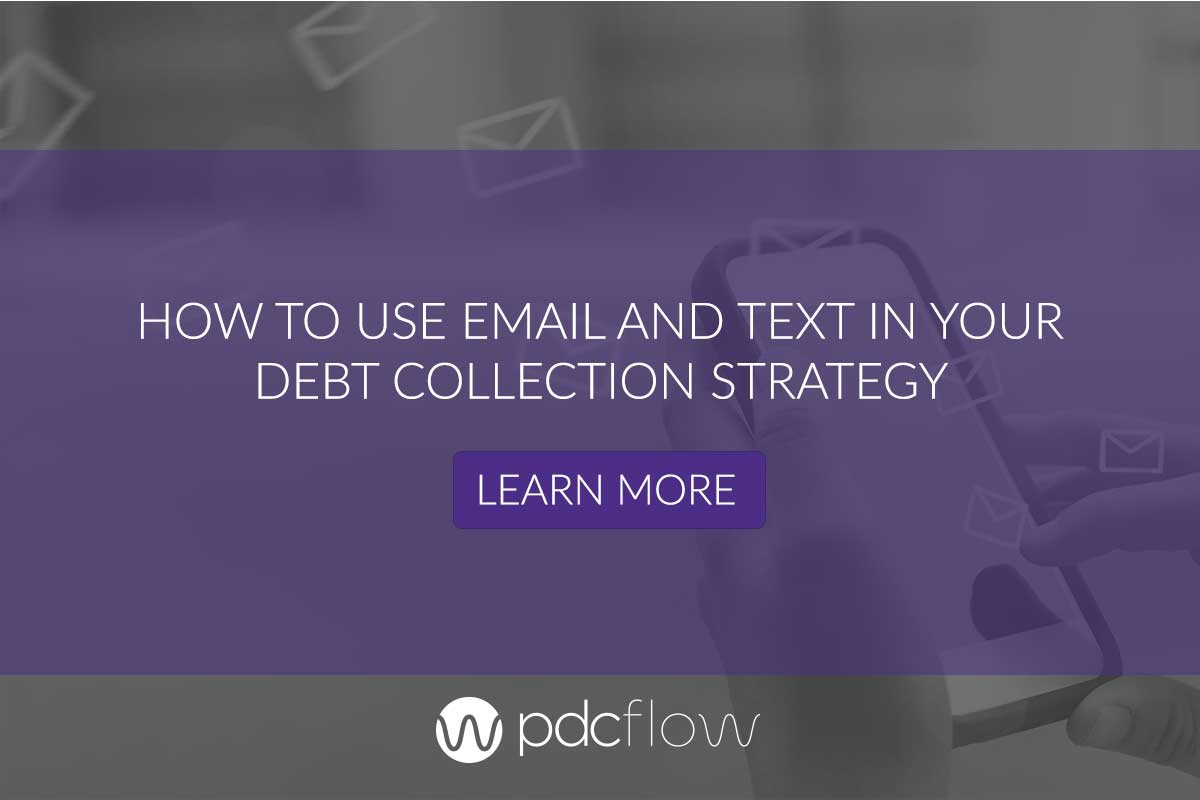Do you pick up the phone when a stranger calls? Most of your consumers don’t. So why keep trying something that doesn’t work? Three digital technology advocates and ARM industry professionals spoke with AccountsRecovery.net to share why text and email are now more than necessary.
Megan Bryant, Credit Collection Partners, Wade Isbell, Professional Credit Services, and Chris Repholz, The CCS Companies, covered a wide range of topics, including incentives for adopting text and email and the logistics of adoption and compliance.

Megan Bryant

Wade Isbell

Chris Repholz
Why Aren’t Companies Using Text and Email?
Waiting to See
Repholtz says many agencies were waiting for the regulation so they could learn more and watch other companies deal with the challenges. “It’s not that easy. It’s not like picking up your phone and sending a text to your friends.”
The problem this presents waiting for others to make the first move will only delay your company’s ability to set up the compliance, infrastructure, policies and procedures and other behind-the-scenes work it takes to make email and text possible.
All the while, new technologies and rule updates are still happening. The longer it takes to get started, the further behind modern strategies you’ll be once you decide to get started.
“Now you have the opportunity to send a text message that allows the consumer to immediately identify the nature of the communication. This is from a debt collector. This is about a certain client. Please call us at or visit our portal at the following web address.
So now you are taking something that was previously a crap shoot, you were hoping that someone would answer the phone. Now you are giving a motivated person a reason to make a phone call or go to your website and deal with it.”
CHRIS REPHOLZ

Internal Restrictions
Fear of the Unknown
One of the most basic reasons many companies haven’t adopted email and text is simply a fear of change. “In general, our industry seems to want to move together as a group.” says Isbell. Many risk-averse agencies hope to reduce lawsuits by avoiding change.
But as new, consumer-preferred tactics are being used by the competition, an agency stuck in the old ways of dialing and paper letters should expect to see market share decrease more and more as time goes by and more agencies upgrade their practices.
“You're not replacing what would have been a successful call or letter. You are basically taking a text or an email and sending it to someone who otherwise would not have engaged in the process because they don’t want to communicate that other way.”
WADE ISBELL

Why Companies Should Use Text and Email
Bryant agrees that waiting for other companies to make the first move is one of the main reasons agencies are stalling. She also notes that the caution may not be necessary. Those who email and text with consumers have seen success with few legal issues.
“We’ve been texting and emailing for three years now and we’ve never had a suit, we’ve never had issues with it,” says Bryant. She also encourages those looking to get started to ask for outside help. “For ones that are out there that are thinking that way, reach out to the ones that have been doing it with no issues.”
Benefits of Text and Email Communications
Aside from assurances from peers, there are concrete incentives to text and email with consumers:
- Higher engagement - it’s easier to reach people if you’re contacting them in ways they prefer.
- Decreasing market share - as technology becomes commonplace, collecting in old ways isn’t going to appeal to clients. Agencies with low tech strategies will eventually begin to lose accounts to those with better, up-to-date offerings.
- Lower broken promise rate - digital communication channels make it easier for customers to pay while the subject is on their mind. Sending a text or email payment reminder decreases the number of promised payments that fall through.
- Consumer preference - customers dictate whether your business is successful. Offering them easier ways to pay is your best option for growing your agency and maintaining a positive rapport.
“It’s what consumers want. That’s the most important thing. They were very very vocal about how they hated the amount of phone calls they were getting. That was extremely apparent in every single focus group that consumer advocates held with the CFPB leading up to Regulation F."
CHRIS REPHOLZ

Downsides
Those who still aren’t sure that it's time to start using digital communication channels may be wondering: what’s the downside? “I don’t think there is one – there hasn’t been for us, at least,” says Bryant.
Repholtz agrees. Sending texts or email to consumers isn’t a nuisance, it’s no longer an unfamiliar channel, and it reaches people you may have never been able to collect from before. There’s simply no more need to take the ‘wait and see’ approach.
“You will get more people to pay you and text messaging is absolutely the right way to approach those people."
CHRIS REPHOLZ

Gathering Consent to Text and Email
For those hesitant to begin texting and email, gathering consent can be a huge step toward risk management within these channels. “Get consent at every possible opportunity you can,” says Isbell. “Similarly, make sure your clients have consent language in their contracts with consumers.”
Remember, obtaining consent is a basic best practice, and even if your agency’s interpretation of Regulation F doesn’t require consent for text, there are many other factors that make it a necessity when using digital channels.
Other Governing Bodies
Regulation F isn’t the only rule that applies to communications with your consumers. For example, some phone carriers have announced they will begin blocking texts coming from debt collectors.
You should mitigate your risk by partnering with the right software vendor. You want a company that stays up-to-date with texting rules and regulations to protect your business.
Opting Out
You must still include an opt out option on every message you send – for both texting and email. Consumers need a fast, clear way to tell you their preferences have changed. Your text and email vendor should provide ways for you to offer opt-outs/unsubscribe buttons on communications.
Some agencies have also set up consumer portals on their websites, where people can manage their preferences and personal information without the help of an agent, before receiving a communication they don’t want.
“The opt out rates are really low. Because people don’t mind getting texts, it’s phone calls that they hate."
CHRIS REPHOLZ

Uniformity and Avoiding Human Error
Different rules for each channel may cause internal confusion. It’s best to simplify any instructions you have for your staff wherever you can.
Bryant advocates for using every communication opportunity to gather consent from your consumers. This not only gives you more chances to opt people into faster, easier channels – it ensures a culture of compliance and security within your organization.
“We require [agents] to ask if [consumers] would like to opt into email, we require [agents] to ask if they’d like to opt into texting. We are getting consent for both."
MEGAN BRYANT

Text and Email Communication Cadence
When you adopt new channels, compliance isn’t the only concern. For your digital strategies to work effectively, you need to put thought and planning into the wording of messages you use and when you send each communication.
Bryant’s company uses pre-created templates and schedules a series of automated messages to consumers as a payment due date approaches. Scheduled payment reminders go out:
- Five days prior to the date the payment is due
- The day the payment is due
- The day after a payment is due
Because these are all pre-created and automated, they require very little work from staff after being set up. After the sequence is over, you then have traditional methods – like calling for a follow up – to continue collection efforts.
Automated text or email sequences (or one-time campaigns to large groups) often catch the attention of consumers who might ignore a call and make it faster and easier to capture payments.
Not only this, but digital channels actually decrease the number of promised payments that fail to be completed because it’s faster to open a text or click a payment link in an email than to wait for your agency to reach out.
"Our broken promise rate has dropped significantly. Not many say no to opting in to texts."
MEGAN BRYANT

What’s the Objective?
What is the main objective of digital communications with consumers? The panelists all agree that email and text are excellent for reaching consumers you’d never collect from otherwise.
Some people don’t want to talk to a person or take extra time out of their day to pay a bill. You would never have engaged these consumers through a phone call. The main objective with using these channels is to maximize the number of people that respond to your efforts.
“We turn a lot of disputes and a lot of accounts that are in question into paying accounts because the customer legitimately has a question. They don’t remember why they owed a bill to this doctor, or this lab or this financial services company or whatever it may be. And so, our goal is drive up interactions – it’s right party contacts. That’s really the goal. Give the customer the choice."
CHRIS REPHOLZ

Because digital channels are so flexible though, there are a few secondary actions you should expect consumers to take after receiving a text message or email from your agency. A few might include:
- Increased inbound traffic from consumers to your website for more information about your company.
- More calls, web chats or other inbound interactions with your customer service team.
- Complaints or disputes. This gives consumers a direct line to you before they turn to the BBB, CFPB, or other public-facing venues for a bad review that may impact your brand reputation.
Test Before Implementing
Bryant cautions that agencies can’t just jump into adopting new tools without a solid plan and testing. Follow the customer journey as though you were a consumer and all the workflows you want to apply.
- Make sure links work and send consumers to the right place.
- Approve written messaging with your compliance team or in house counsel.
- Don’t offer channels unless they are fully functional and do what they’re supposed to
Implementing too early can cause roadblocks or frustration if your workflows, templates and software are not fully set up and ready to handle interactions from start to finish.
Advertising Your Options
“The piece that I see a lot from where I sit within the company is a lot of our clients, they obviously care a lot about collections but they also really care about low consumer complaints. And so you need to have these other channels, because as the co-panelists here have noted, the CFPB was concerned about people being bothered by telephone calls.
So if you can use what are perceived to be less-intrusive communication channels to really just make sure that consumers know that they’ve got an account in collections.”
WADE ISBELL

Integration
Anytime you add new software to your tech stack, integration should be a factor in your decision. Most vendors already have integration partnerships in place so you can use your digital communication tools, create templates, and access reporting all within your CRM.
Another option for an integrated software system is to choose a vendor that offers open APIs. Integrate only the products you need into your existing system, or do so in the best way that fits your business.
Remember, not every consumer is the same. To maximize how many accounts you close, you need to cater to the preferences of a wide audience.
PDCflow’s software can:
- Offer consumer-preferred communication channels – email and SMS text.
- Help companies maintain compliance through opt-in and opt-out functionality.
- Help organizations stay on top of changing rules and regulations, making the appropriate adjustments to the software.
- Offer several integration partners or open APIs so organizations can choose the solution that works best for them.






